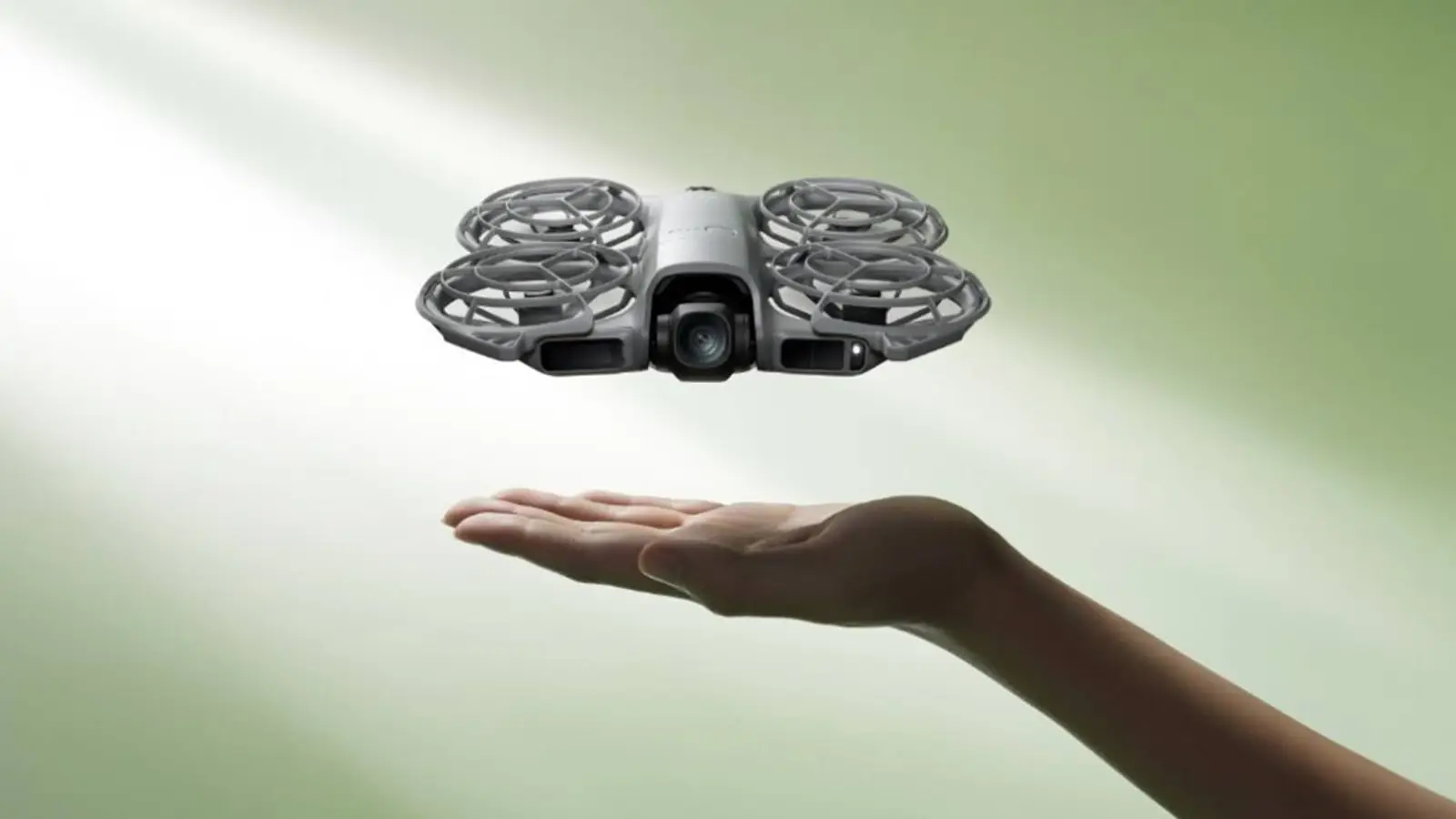DJI Neo 2 drone: gestures, 4K video, and all-around sensing
Discover DJI Neo 2, a 151 g ultralight drone with gesture controls, all-around obstacle sensing, 4K/100fps video, ActiveTrack, and 19-minute flights safely.
Discover DJI Neo 2, a 151 g ultralight drone with gesture controls, all-around obstacle sensing, 4K/100fps video, ActiveTrack, and 19-minute flights safely.

© DJI
DJI has introduced the Neo 2, a compact drone aimed at users who want a light, convenient, and intuitive quadcopter. Weighing just 151 grams, it is the lightest DJI model with all-around obstacle sensing. The newcomer adds gesture controls, an updated ActiveTrack, and a SelfieShot mode geared toward everyday capture, signaling a focus on effortless shooting rather than technical tinkering.
The Neo 2’s body houses a small display beside the camera that shows the current shooting mode. Takeoff can be done straight from the palm: point the drone at yourself and press the launch button. When it’s time to land, the Return to Palm function brings the aircraft back to your hand, a confidence booster that spares extra maneuvers and reduces risk.
The headline upgrade is gestures. With a raised palm, users can move the drone sideways or adjust altitude; with two hands, they can change distance. Camera tilt is available without a remote. Voice commands work through a smartphone or a Bluetooth headset, and for longer-range flights the Neo 2 connects to the DJI RC N3 controller with video transmission up to 10 km. It also supports the DJI motion controller and DJI FPV goggles, a spread of control options that suggests DJI wants to remove as much friction as possible from the flying experience.
The camera pairs a 12 MP 1/2-inch CMOS sensor with an f/2.2 lens and new 2-axis stabilization. It captures 4K video at up to 100 frames per second, and shoots vertical clips for social platforms at 2.7K. ActiveTrack and SelfieShot automatically frame a person and switch instantly between close-up, full-body, and wide shots. In open areas, the drone can follow movement at speeds up to 12 m/s and supports tracking in eight directions, including diagonal, which helps keep subjects composed during dynamic moves.
For newcomers, safety features include all-around monocular vision, a front LiDAR, bottom infrared sensors, and built-in propeller guards. Hover stability and positioning have been improved, making it easier to fly indoors or close to buildings and water. Together, these safeguards lower the learning curve without dulling the fun.
The Neo 2 flies for up to 19 minutes and provides 49 GB of built-in storage. Video can be transferred to the DJI Fly app over Wi‑Fi at up to 80 MB/s. Pricing starts at 239 euros, and the fast transfers should help streamline turnaround between flights.